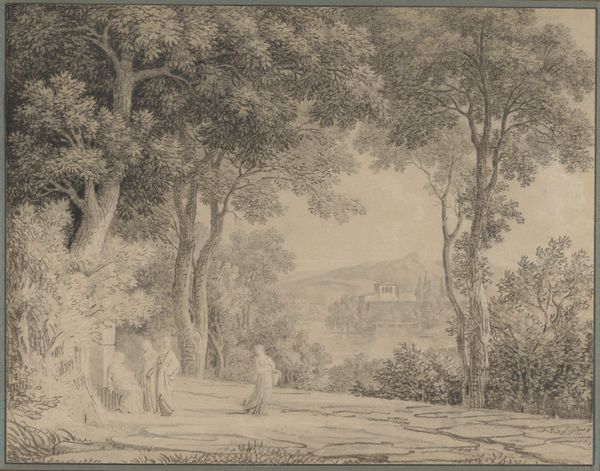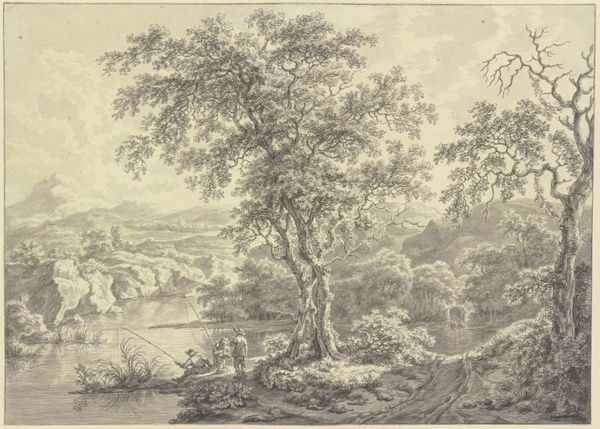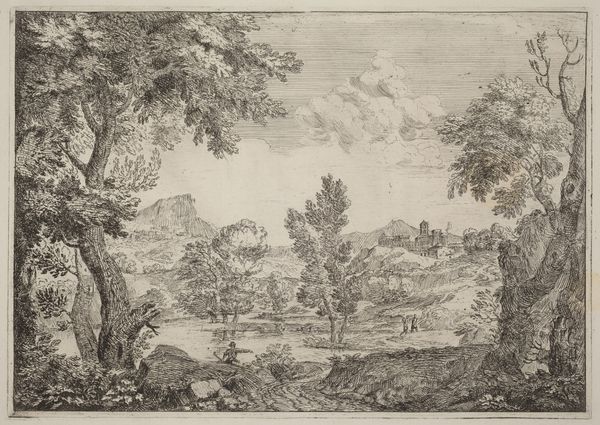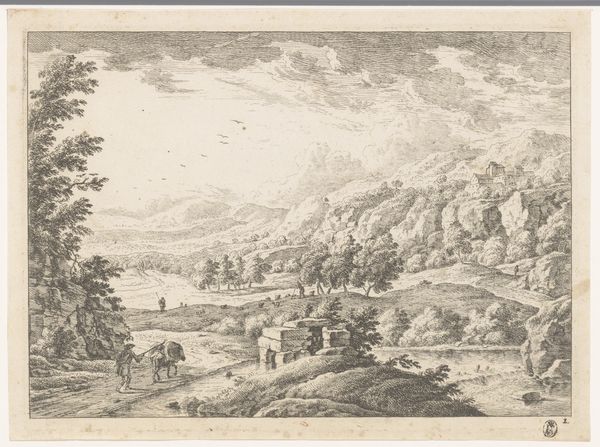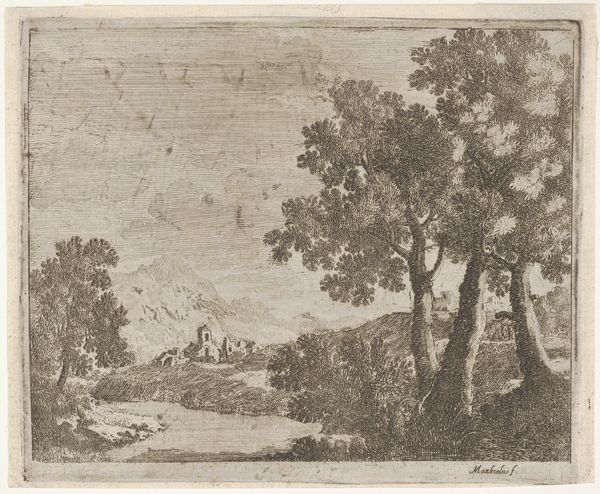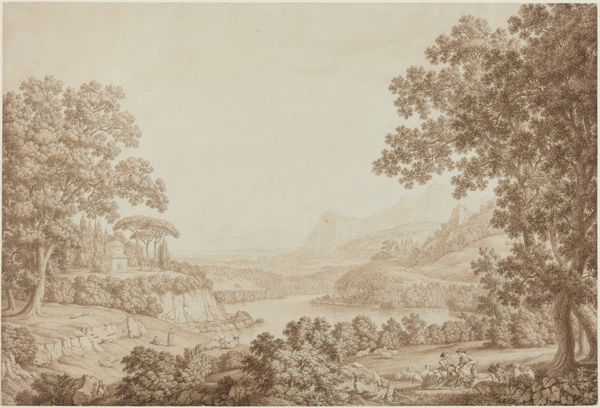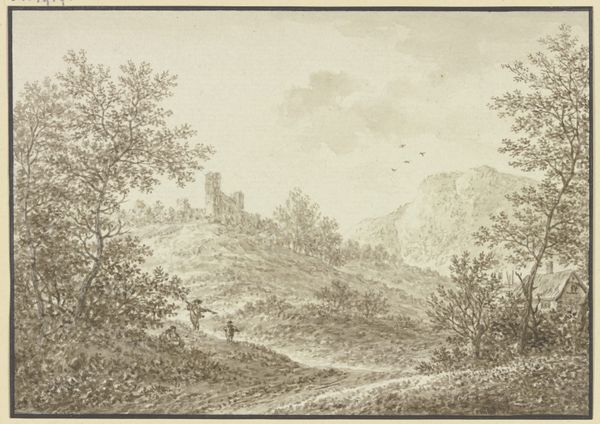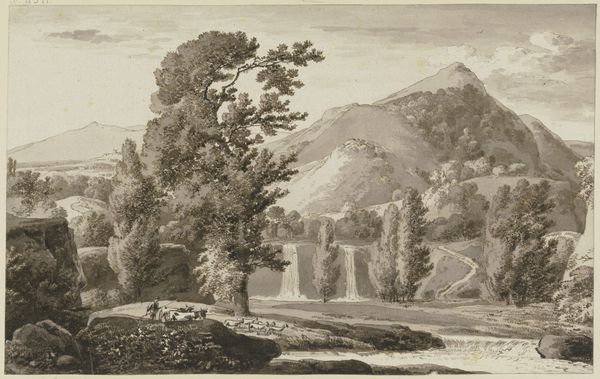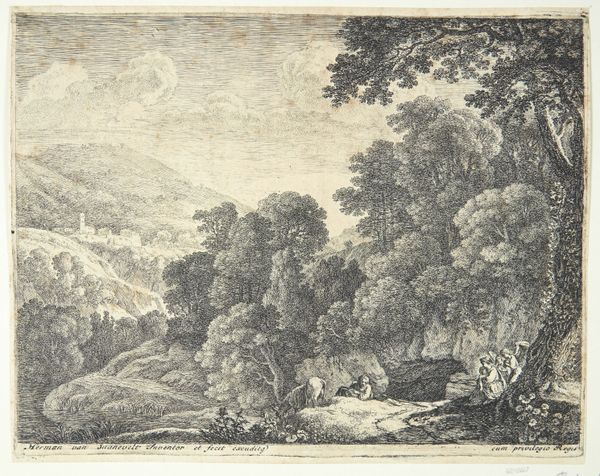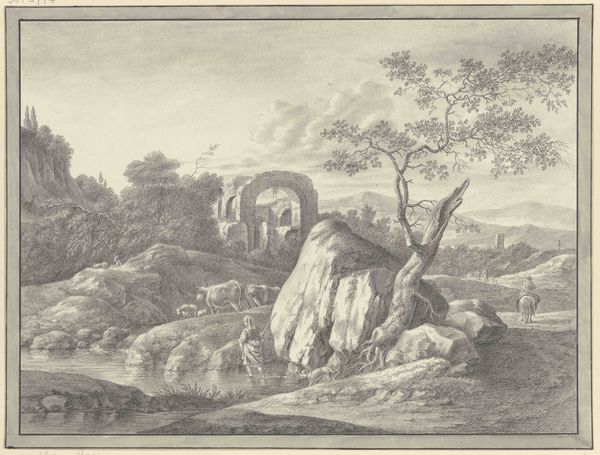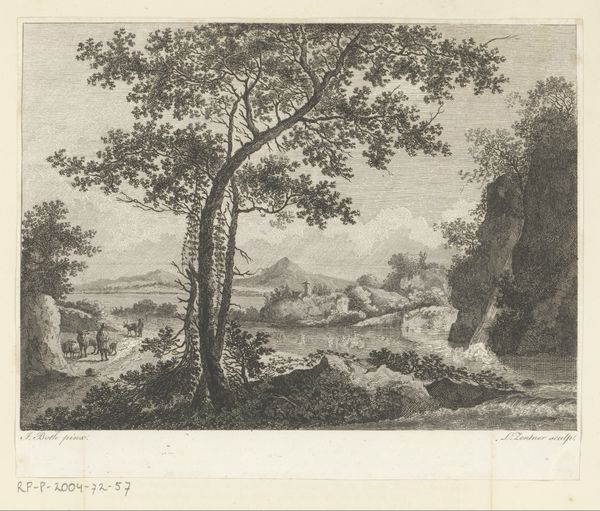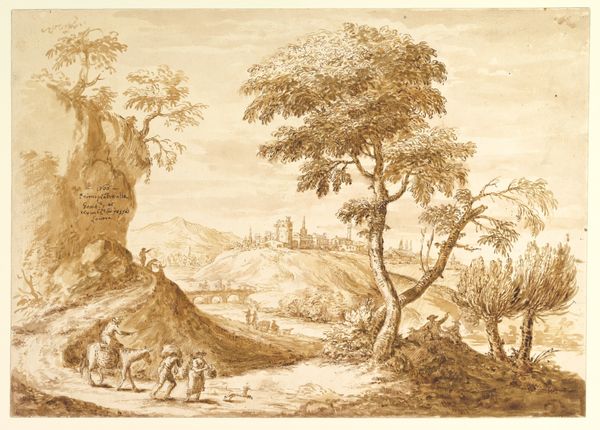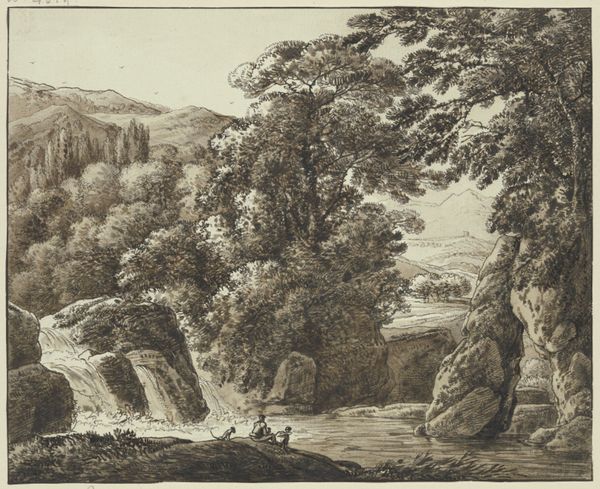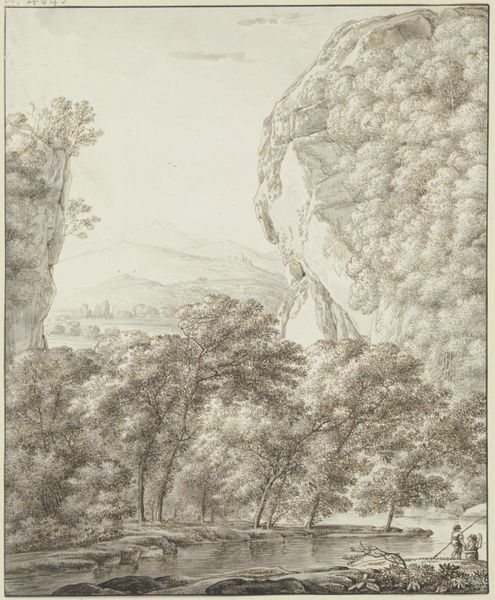
Gebirgslandschaft, links ein Talblick, rechts hohe Bäume und ein Steg über eine Schlucht
0:00
0:00
drawing, paper, ink
#
drawing
#
landscape
#
etching
#
paper
#
form
#
ink
#
romanticism
#
line
#
realism
Copyright: Public Domain
Editor: So, here we have Friedrich Wilhelm Hirt’s, "Mountainous Landscape," rendered in ink on paper. I'm really struck by how delicate the linework is, creating such a detailed scene. What do you see in this piece? Curator: Immediately, I see the lens of Romanticism. Landscapes like these weren’t just about depicting scenery; they were deeply entangled with ideas about national identity and the sublime. This specific framing is very deliberate. How do you think this perspective contributes to a broader dialogue around power and representation? Editor: Power? Representation? It’s a pretty picture, isn't it? Curator: Absolutely. But consider who had the access and resources to represent these landscapes. The viewpoint from the high ground? Does it subtly reinforce a dominant position? Think about the context of early 19th century Germany: land ownership, burgeoning nationalism… These "picturesque" scenes often glossed over social realities, especially peasant exploitation and land enclosure, no? Editor: I guess I never considered it that way. So, the beauty is, in a way, obscuring a more complicated history? Curator: Precisely. By idealizing the natural world, Romantic landscapes frequently served as a means of eliding social inequalities and projecting nationalistic aspirations. Does understanding this intersectional narrative shift how we appreciate or even critique the artwork today? Editor: It does make me think twice about simply accepting its beauty. I see how it's connected to power and whose voices are missing. Thanks, this was so informative! Curator: And for me, a crucial reminder of art's complex role as both a reflection and a potential subversion of social and political forces.
Comments
No comments
Be the first to comment and join the conversation on the ultimate creative platform.
